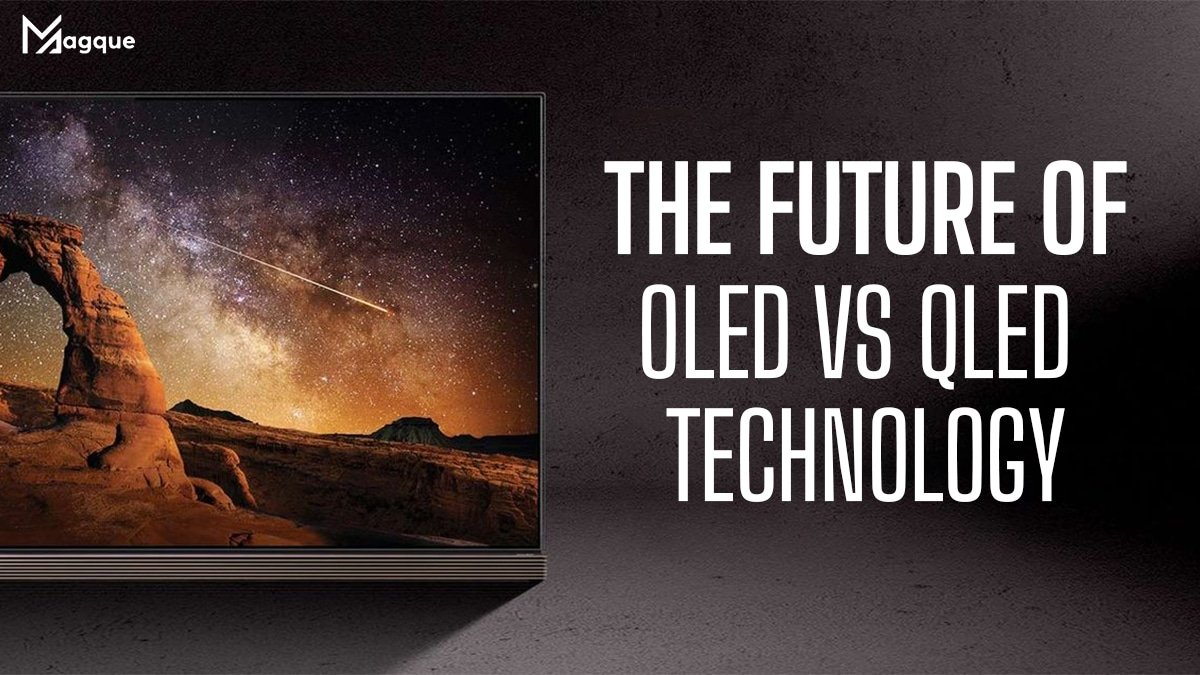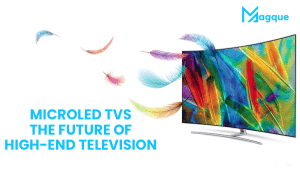Two contenders in display technology stand out: OLED and QLED. These acronyms might sound like alphabet soup, but they represent the cutting-edge advancements shaping our viewing experiences. Picture this: you’re sitting in your cozy living room, eagerly anticipating the latest blockbuster movie. But as the opening scene unfolds, you can’t help but marvel at the clarity and vibrancy of the images on your screen. That’s the magic of OLED and QLED at work.
OLED, or Organic Light Emitting Diode, boasts self-emissive pixels that produce their light. Think of each pixel as a tiny beacon capable of illuminating itself precisely. This results in unparalleled contrast levels, deep blacks, and vibrant colors that pop off the screen. It’s like witnessing a fireworks display in the comfort of your own home. However, the natural beauty of OLED lies in its flexibility. With its ability to bend and curve, OLED opens up a world of possibilities for designers and manufacturers alike. Imagine a television that seamlessly blends into the contours of your living space, like a piece of modern art.
On the other hand, we have QLED or Quantum Dot Light Emitting Diode. This technology harnesses the power of quantum dots, microscopic semiconductor particles that emit light when energized. Picture each quantum dot as a tiny artist, meticulously painting each pixel with precise colors. The result? A dazzling array of hues that leap off the screen with lifelike realism. It’s like peering through a window into another world, where every detail is rendered with astonishing clarity. But what sets QLED apart is its brightness. With peak luminance levels rivaling the sun, QLED ensures that your viewing experience remains vivid and captivating, even in the brightest rooms.
But which technology holds the key to the future of display innovation? The answer lies in the nuances of each approach. While OLED excels in contrast and flexibility, QLED shines in brightness and color accuracy. It’s like comparing a master painter to a virtuoso sculptor—each brings unique strengths. And as technology continues to evolve, we can expect to see further advancements that push the boundaries of what’s possible.
So, what does the future hold for OLED and QLED technology? Will OLED’s flexibility reign supreme, or will QLED’s brightness steal the spotlight? The answer lies in a hybrid approach that combines the best of both worlds. Imagine a display that boasts the deep blacks of OLED and the brightness of QLED—a true masterpiece of modern engineering. Whatever the future holds, one thing is sure: the world of display technology is brighter and more vibrant than ever before.
In conclusion, the future of OLED vs. QLED technology is a tale of innovation and ingenuity. As we journey into uncharted territory, we expect to see further advancements that redefine how we experience the world around us. Whether you’re Team OLED or Team QLED, one thing is sure: the future looks brighter than ever.
For more insights into the latest advancements in display technology, stay tuned to Magque, your go-to source for all things tech.
FAQs
1. What are the main differences between OLED and QLED technology?
OLED (Organic Light Emitting Diode) technology relies on self-emissive pixels that produce their light, resulting in deep blacks and vibrant colors. On the other hand, QLED (Quantum Dot Light Emitting Diode) technology utilizes quantum dots to enhance brightness and color accuracy. While OLED excels in contrast and flexibility, QLED boasts superior brightness and color vibrancy.
2. Which technology offers better picture quality: OLED or QLED?
OLED and QLED offer exceptional picture quality but excel in different areas. OLED displays typically provide deeper blacks and better contrast ratios, making them ideal for dark room environments. On the other hand, QLED displays offer higher peak brightness levels and superior color accuracy, making them suitable for well-lit rooms and vibrant content.
3. What are the advantages of OLED technology?
OLED technology offers several benefits, including self-emissive pixels for deep blacks, wide viewing angles, and flexible display capabilities. OLED displays also tend to have faster response times and lower power consumption than traditional LCDs. OLED panels can be made thinner and lighter, making them ideal for applications such as smartphones and wearable devices.
4. How does QLED technology compare to traditional LCDs?
QLED technology represents a significant advancement over conventional LCDs. By incorporating quantum dots, QLED displays can achieve higher peak brightness levels and broader color gamuts. This results in more vibrant and lifelike images with improved color accuracy and saturation. Additionally, QLED displays are often more energy-efficient than traditional LCD panels.
5. What does the future hold for OLED and QLED technology?
The future of OLED and QLED technology is promising, with ongoing advancements in display technology driving innovation forward. We can expect further improvements in picture quality, energy efficiency, and display flexibility. Additionally, hybrid approaches that combine the strengths of OLED and QLED technology may emerge, offering even greater versatility and performance. As the demand for high-quality displays continues to grow, OLED and QLED technology will play a pivotal role in shaping the future of visual entertainment.
Read Also This: OLED vs. QLED: Choosing the Right TV Technology













